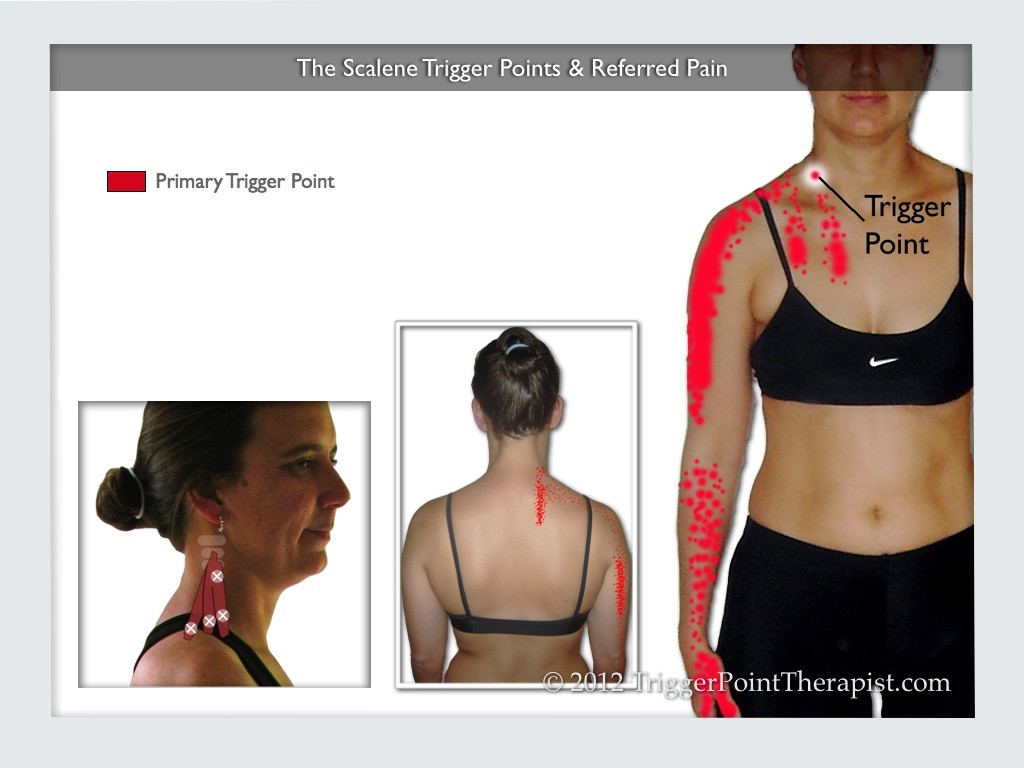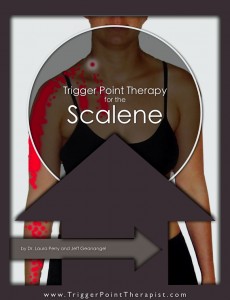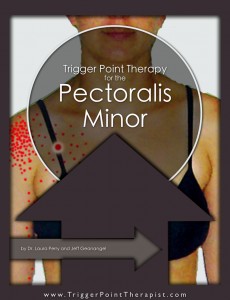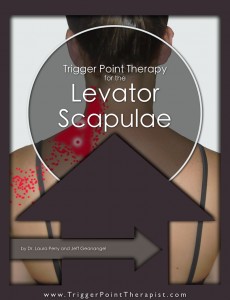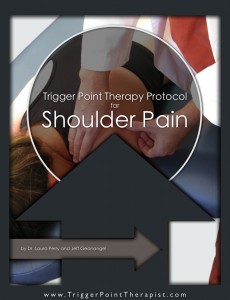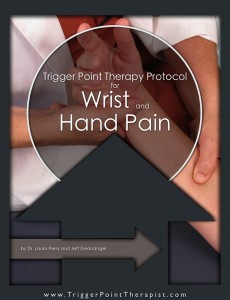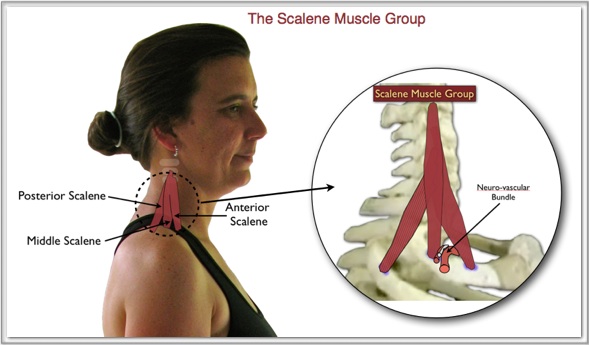
Trigger point activity in the Scalene muscle group plays a significant role in many upper body pain complaints. A therapist must know this muscle group and its trigger points very well if they are to offer effective solutions to their client’s chest pain, upper back pain, shoulder pain, radiating arm pain or thoracic outlet syndrome, wrist pain, and hand pain complaints. The job of releasing Scalene trigger points is made more difficult by the somewhat hidden location of the muscle group and its proximity to many important nerve trunks and blood vessels in the neck region. This combination of factors usually results in many cases of Scalene trigger point activity going undiagnosed and untreated, which creates an opportunity for a good therapist to help the many clients perplexed by this condition.
The Scalene Muscles
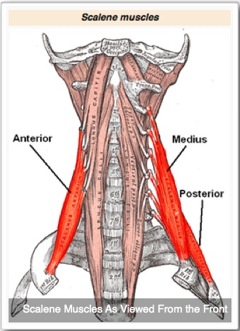 The Scalene muscle group consists of 3 separate muscles:
The Scalene muscle group consists of 3 separate muscles:
- The Anterior Scalene
- The Middle Scalene
- The Posterior Scalene
All three muscles attach superiorly from the transverse processes of the cervical vertebrae and extend downward to attach to the first and second ribs. Bilateral contraction of the Scalene muscles can elevate the ribs to aid in inhalation, and also flex the neck to the same side if contracting unilaterally.
A neuro-vasular bundle exits the neck region and passes through the space between the middle and anterior scalene muscles, above the first rib and below the clavicle.
Scalene Trigger Points, Referred Pain, and Symptoms
While each Scalene muscle can harbor multiple trigger points, the primary trigger point in the Anterior Scalene is the most frequently encountered in my clinical experience. My clients with active Scalene trigger points often complain of the following types of pain and symptoms (ordered from most common to least common):
- A “two-fingered” projection of pain in the chest region
- pain on the inside border of the shoulder blade
- pain, numbness or tingling in the thumb or index finger
- shoulder pain
Because these trigger points can cause chest pain and breathing difficulties, many clients become very concerned that they are experiencing cardiac symptoms. Of course, it is critically prudent to refer such clients to a cardiologist for a complete exam, but typically I am referred these patients from a cardiologist after a complete work-up has ruled out any cardiac involvement. Often these patients are diagnosed with panic attacks, but since Scalene trigger points are activated and perpetuated by hyperventilation-type breathing (upper-chest paradoxical breathing), I find that most of these patient’s panic attacks disappear with the release of active Scalene trigger points.
Whiplash from a car accident is also a frequent cause of trigger point activation in this muscle group. Often I see these clients long after their accident, when persistent radiating pain and/or numbness in their arms has them convinced that they suffered a spinal disc herniation or rupture in their neck. Overall, the perplexing nature of the pain and symptoms associated with these trigger points can be quite vexing to a client’s emotional state, and often perpetuates anxiety disorders and depression.
Treating the Scalene Trigger Points
In teaching the release of Scalene trigger points to therapists over the years, a frequent concern is that most therapists become intimated by these trigger points. Granted, it can be difficult at first to accurately locate and release the Scalene trigger points by palpation, without putting any collateral pressure on the nerve trunks or blood vessels in the immediate region as you do so. For this reason, I detail a stretch-release technique for the Scalene trigger points in my instructional video: Trigger Point Therapy for the Scalene Muscle Group , that doesn’t require specific pressure on a Scalene trigger point to deactivate it. Still, I have noticed that the really effective therapists make the effort to explore this remarkable muscle group and learn how to release its trigger points safely and reliably.
Got an iPad? Get the Trigger Point Therapy for the Scalenes Booklet for the iPad on the iBookstore.
Click on the image below to view an excerpt from the Scalene Trigger Points video on YouTube:
Related Myofascial Research and Links:
- Cardiology and Myofascial Trigger Points: Janet G. Travell’s Contribution by David G. Simons, MD
- Travell & Simons’ Myofascial Pain & Dysfunction: Upper Half of Body: Chapter 20-Scalene Muscles (google books reference)
- Thoracic Outlet Syndrome-A Myofascial Variant by Sucher BM (abstract)
- Scalene Trigger Points: The Great Imitators by Donald Murphy
- Setting the Scalenes Straight by Nicole Culter, L.Ac.
- Thoracic Outlet Syndrome by Lindgren in International Musculoskeletal Medicine, Vol. 32, Number 1 (abstract)
- The Trigger Point Therapy Workbook-Your Self-Treatment Guide to Pain Relief by Clair Davies (google books reference)
Related Articles:
- How to Release Your Hand & Wrist Trigger Points
- Pectoralis Minor Trigger Point: The Annoying Little Brother
- Levator Scapulae Trigger Points: Frankenstein Pain
- Shoulder Pain Trigger Points: The Multi-Headed Myofascial Pain Monster
Related Instructional Videos:
